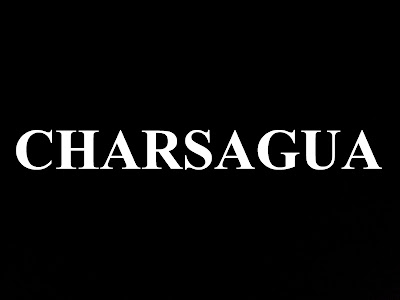The Spanish missionaries in the Marianas brought with them the custom of the Misan Aginåtdo, which are Masses celebrated before dawn nine days before Christmas. Thus they begin on December 16.
In Saipan, they have the custom of singing this particular song on the first day of Aginåtdo, or December 16.
Since the birth of Jesus all began with the Annunciation by the Archangel Gabriel to Mary that she was chosen by God to be the Mother of Jesus, Aginåtdo begins with this event in mind. The words of this song spell it out.
The melody, by the way, is used in more than one Chamorro hymn. This is the same melody, for example, as the hymn to Santa Ana, the grandmother of Jesus and the mother of Mary entitled "Sainan i Bithen Maria."
Pot tinago' i Saina-ta i Atkånghet San Gabriel
(By order of our Lord the Archangel Saint Gabriel)
måtto guato gi una bithen ni eståba Nasaret. (1)
(came to a virgin who was in Nazareth.)
Annai måtto gi me'nå-ña, "Åbe," ilek-ña i ma tågo',
(When he came before her, "Ave," the messenger said,)
"Maria, bula hao ni gråsia, si Yu'us gaige giya
hågo."
("Mary, you are full of grace, God is with you.")
"Un fañågo, mungnga manman, i Nana' libren i taotao;
("You will give birth, don't be amazed, to the Savior of humanity;)
i remedio para todos yan i anite todo espånto."
(the remedy for all and the demons will be alarmed.")
I bithen i anghet umoppe, "Ti hu hulat kumomprende;
(The virgin answered the angel, "I am unable to understand;)
boton-måme 'an i asaguå-ho i ginasgas para siempre." (2)
(it is our vow, my husband and I, to be chaste always.")
Ya manoppe i ma tågo', "Siempre bithen ha' un såga;
(And the emissary answered, "You will surely remain a virgin;)
i Mesias un fañågo, ni esta åpmam na ma nangga.
(you will give birth to the Messiah, whom they have awaited for a long time already.)
Oppe yo' guse', Señora, sa' ma nanangga 'u gi langet. (3)
(Answer me quickly, Lady, for they await me in heaven.)
På'go na puenge nai gloria para todos i man ånghet."
(For tonight is glory for all the angels.")
Si Maria pues manoppe, "Sangåne i tinakhilo'-ña
(So Mary then answered, "Tell His highness)
na gi uttimon esklabå-ña u fa'tinas i pinto'-ña."
(that in the last of His servants His will shall be done.")
Ma hungok todo gi langet, "Maria, bula hao ni gråsia."
(All in heaven heard, "Mary, you are full of grace.")
Ma repite ni man ånghet, "Åbe, Nånan i Saina-ta."
(The angels repeated, "Hail, Mother of our Lord.")
NOTES
(1) In Chamorro, the L in Gabriel is pronounced as a T, Ga - bri - et, so it rhymes with Nasaret, in English Nazareth.
(2) Yan, meaning "and," is shortened to 'an.
(3) Another shortcut. Yo' (me) is shortened to 'u.






.jpg)




























